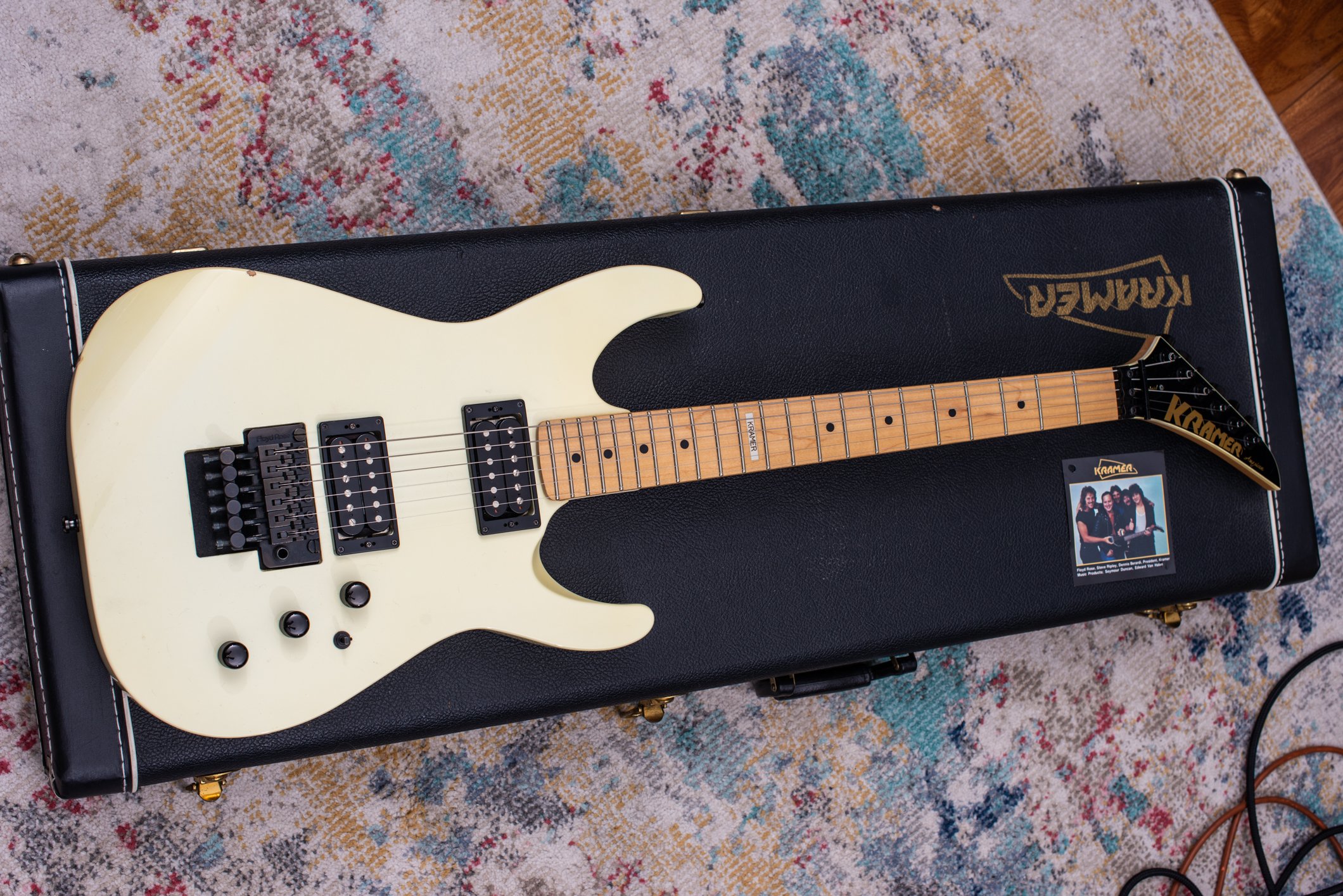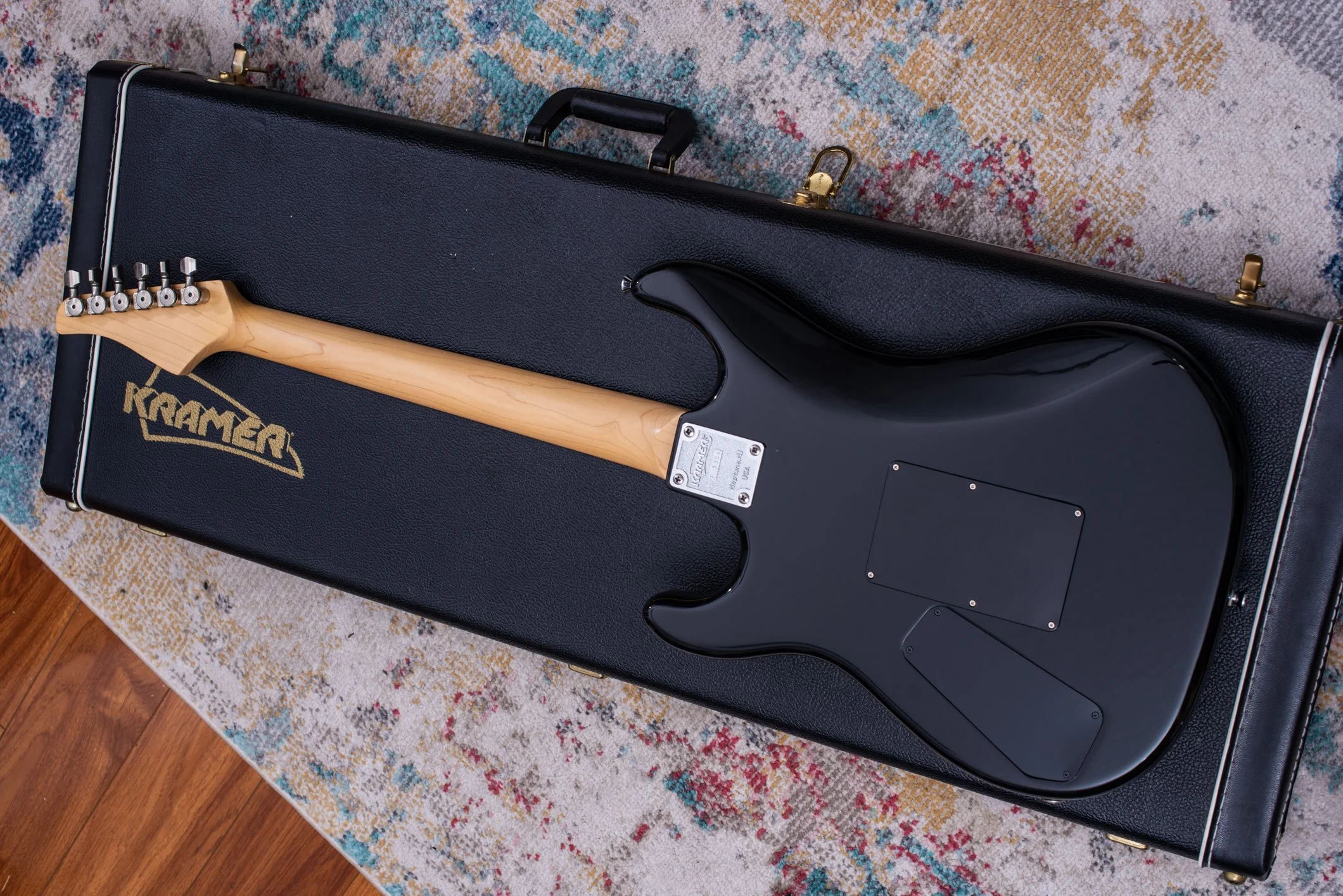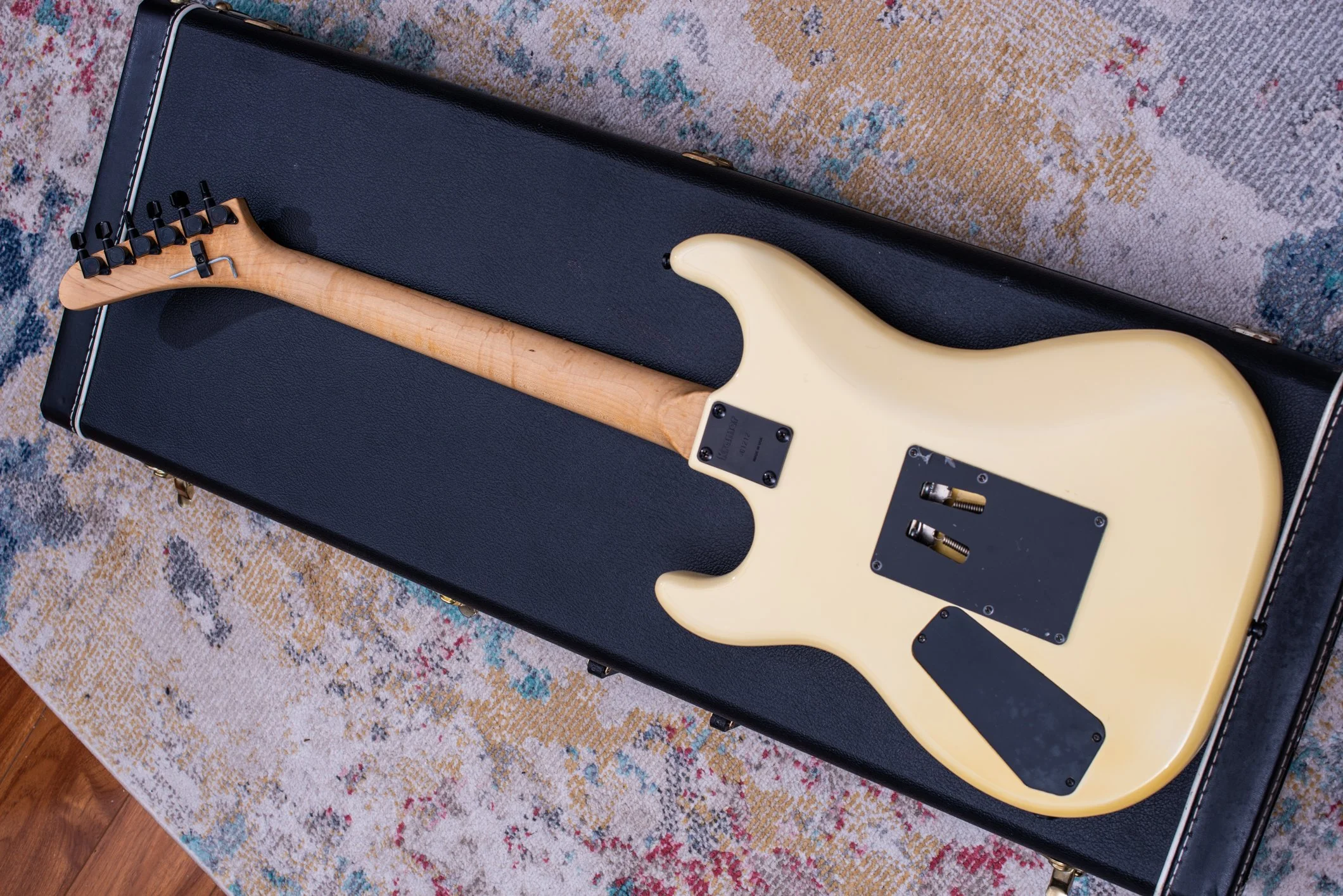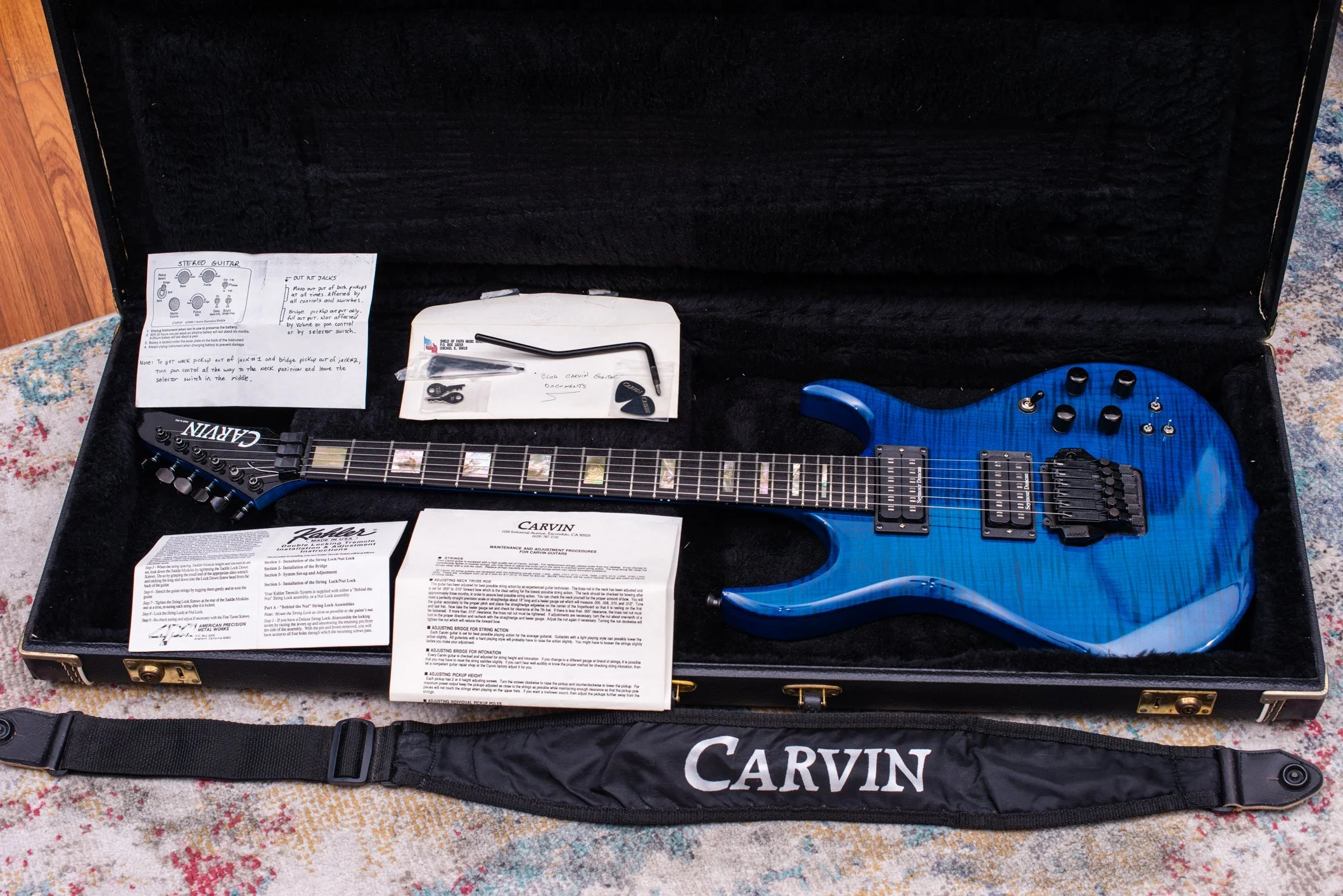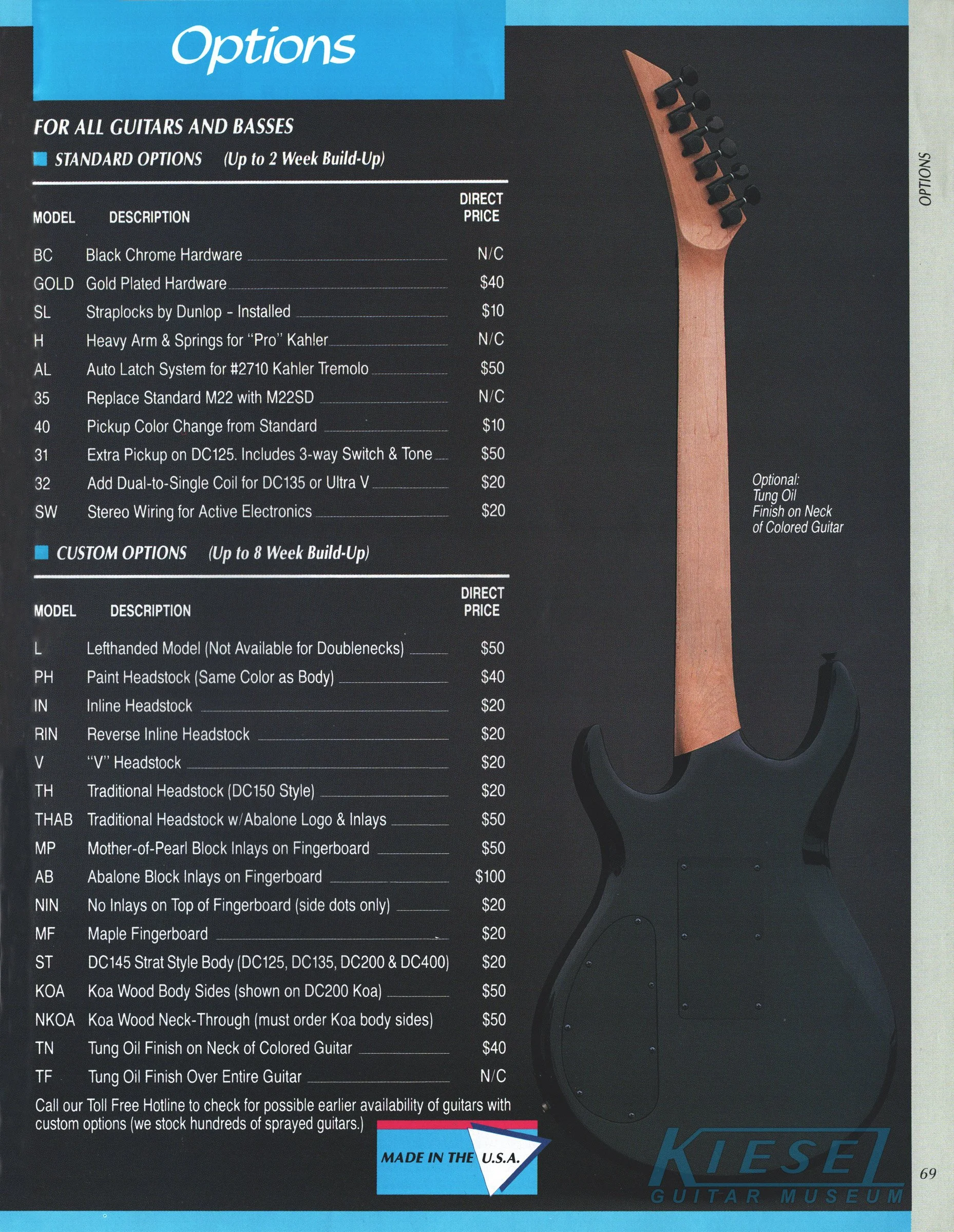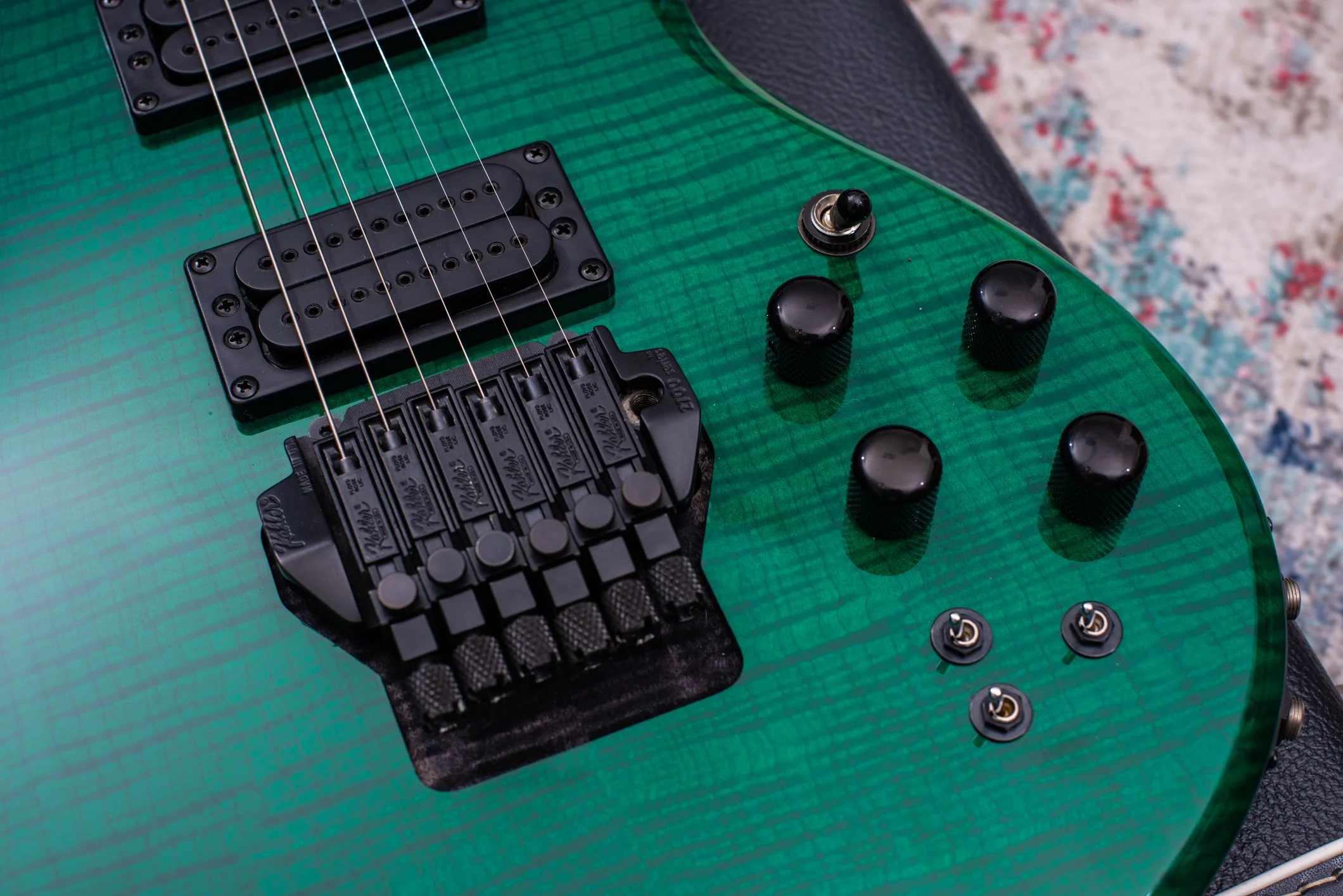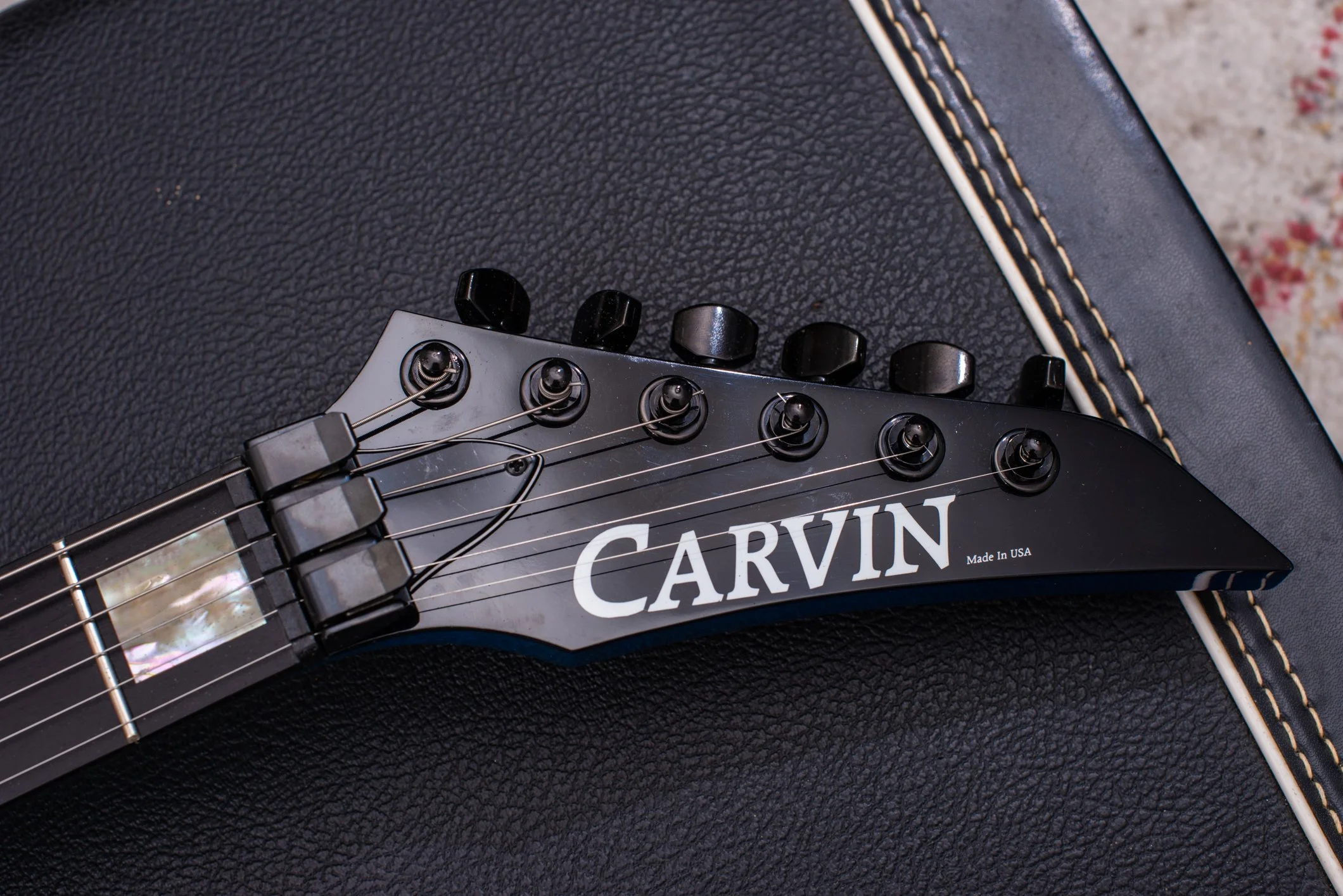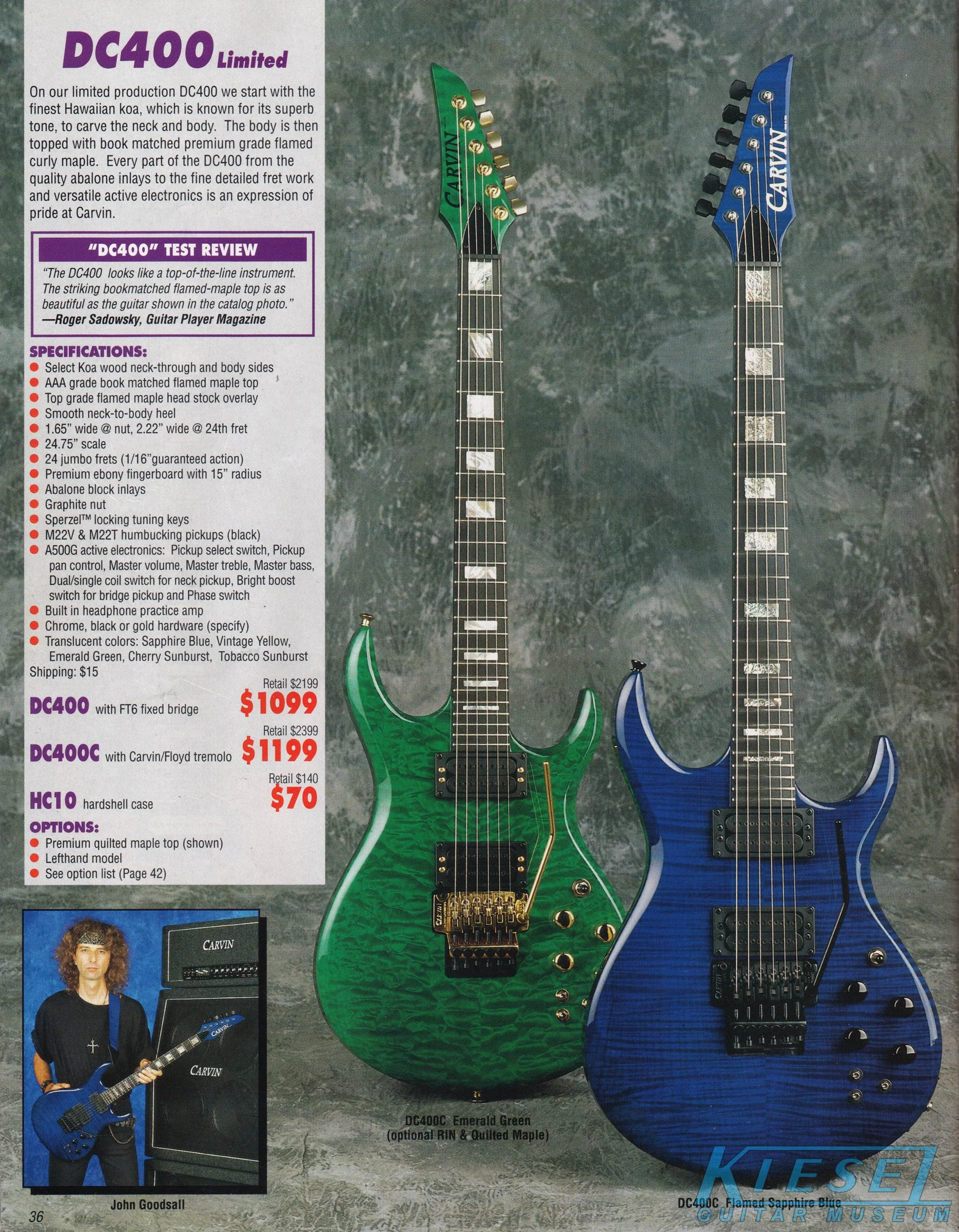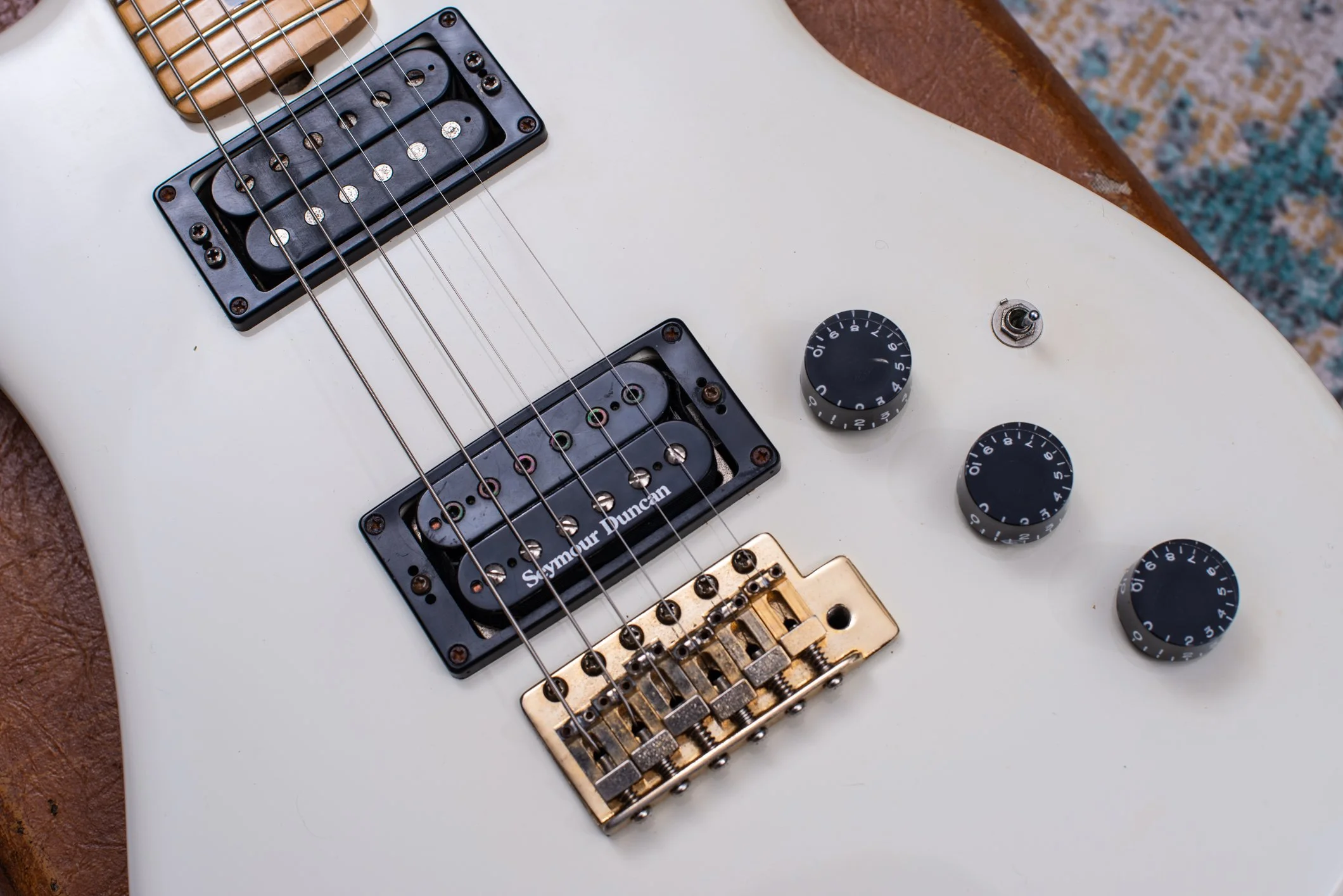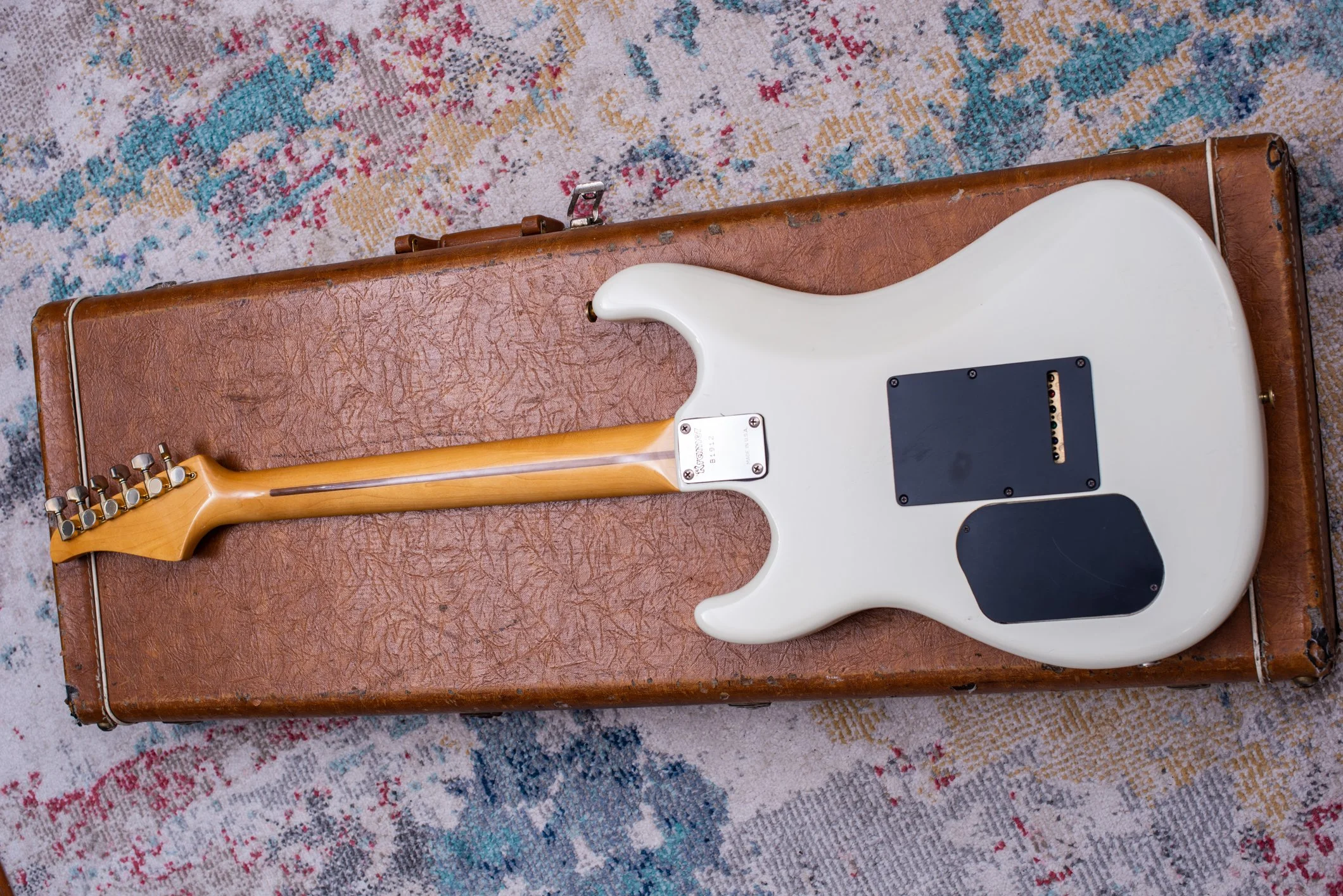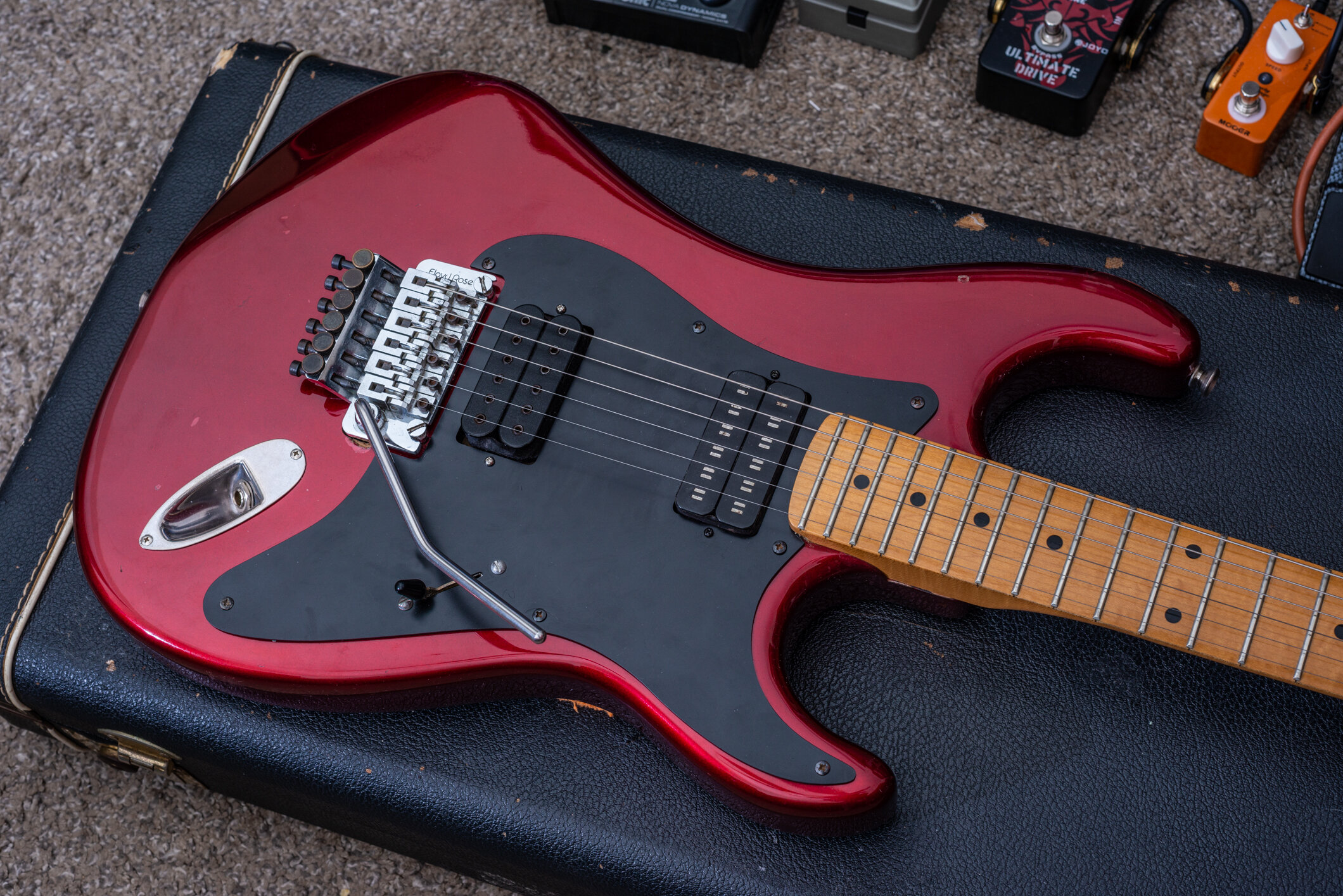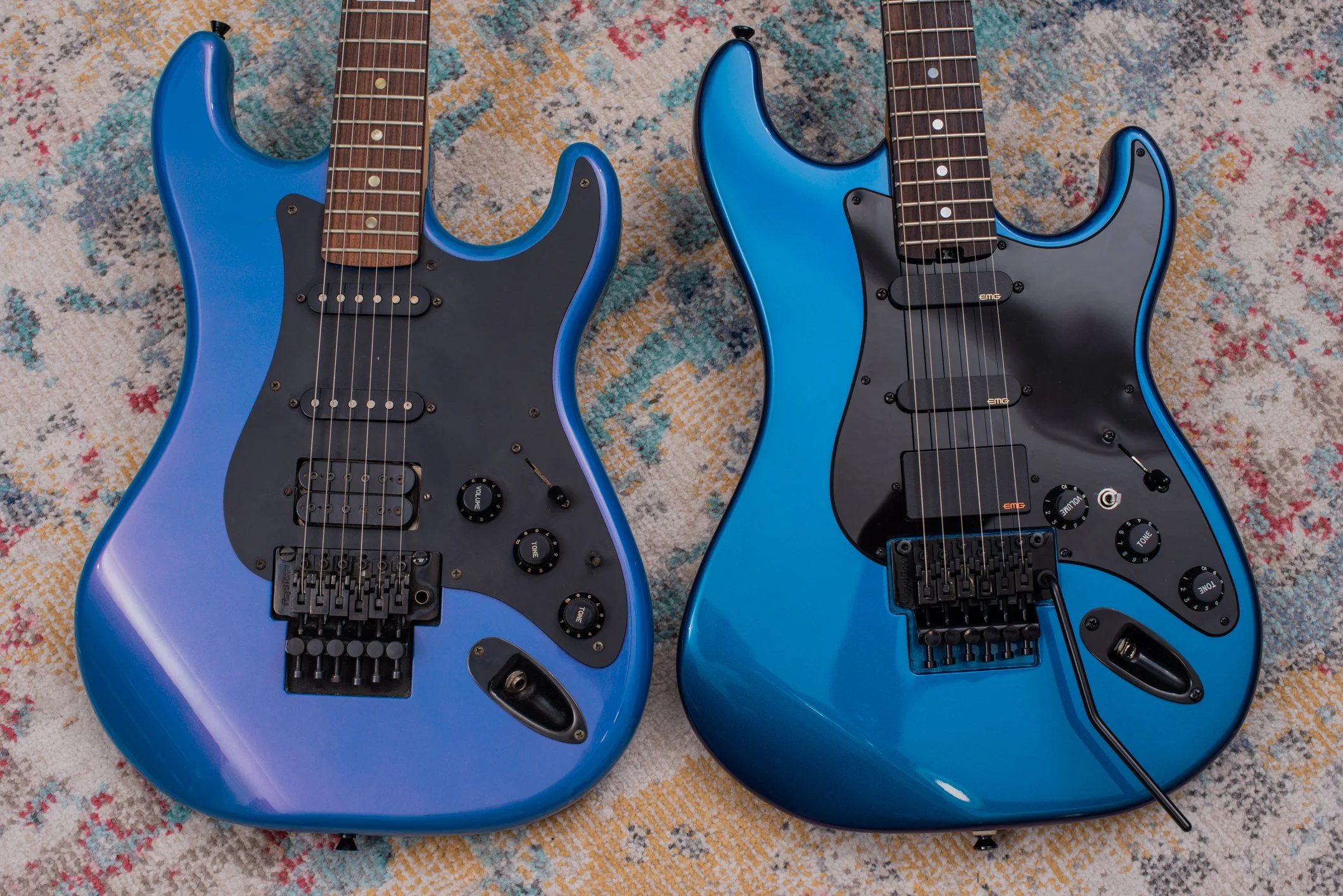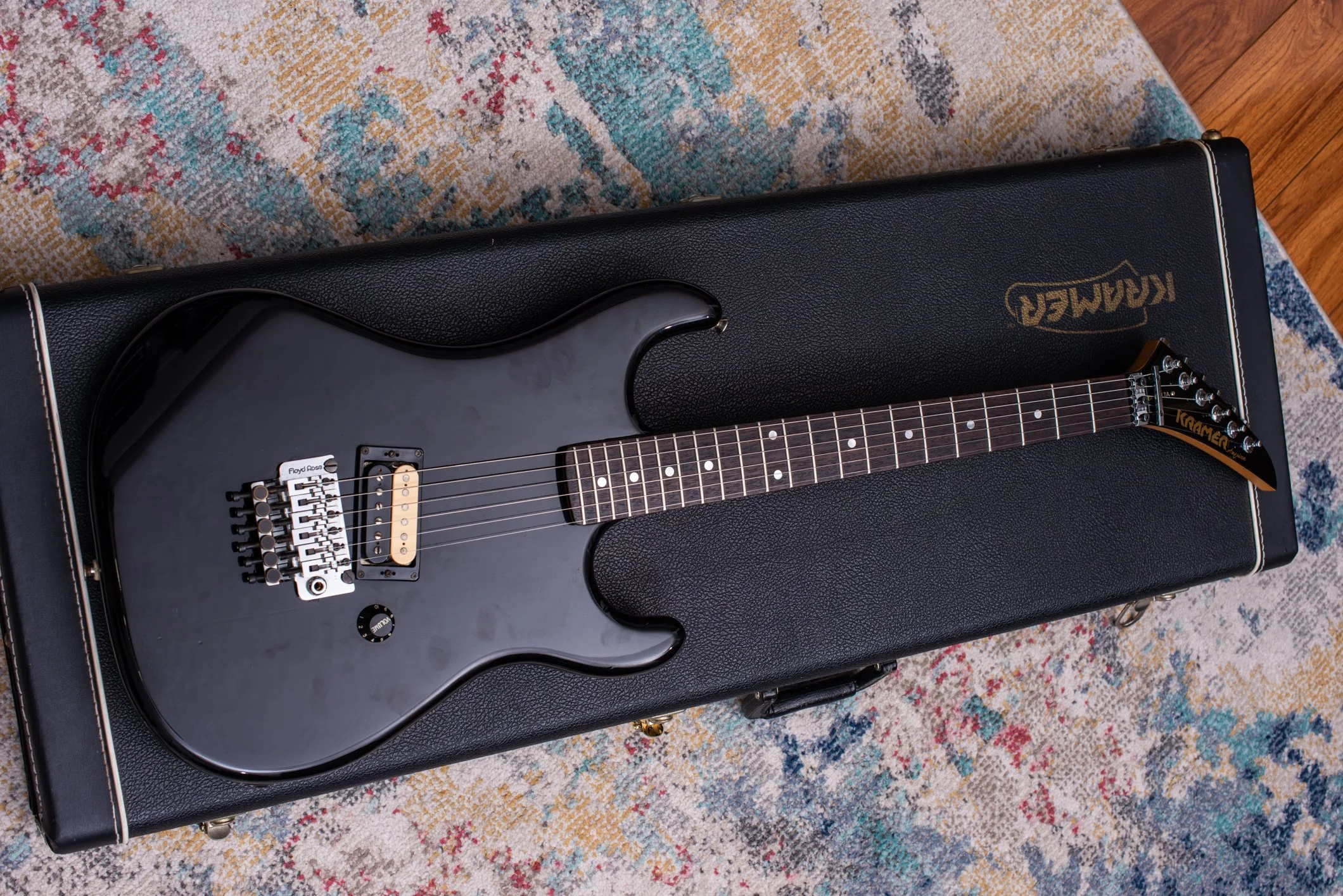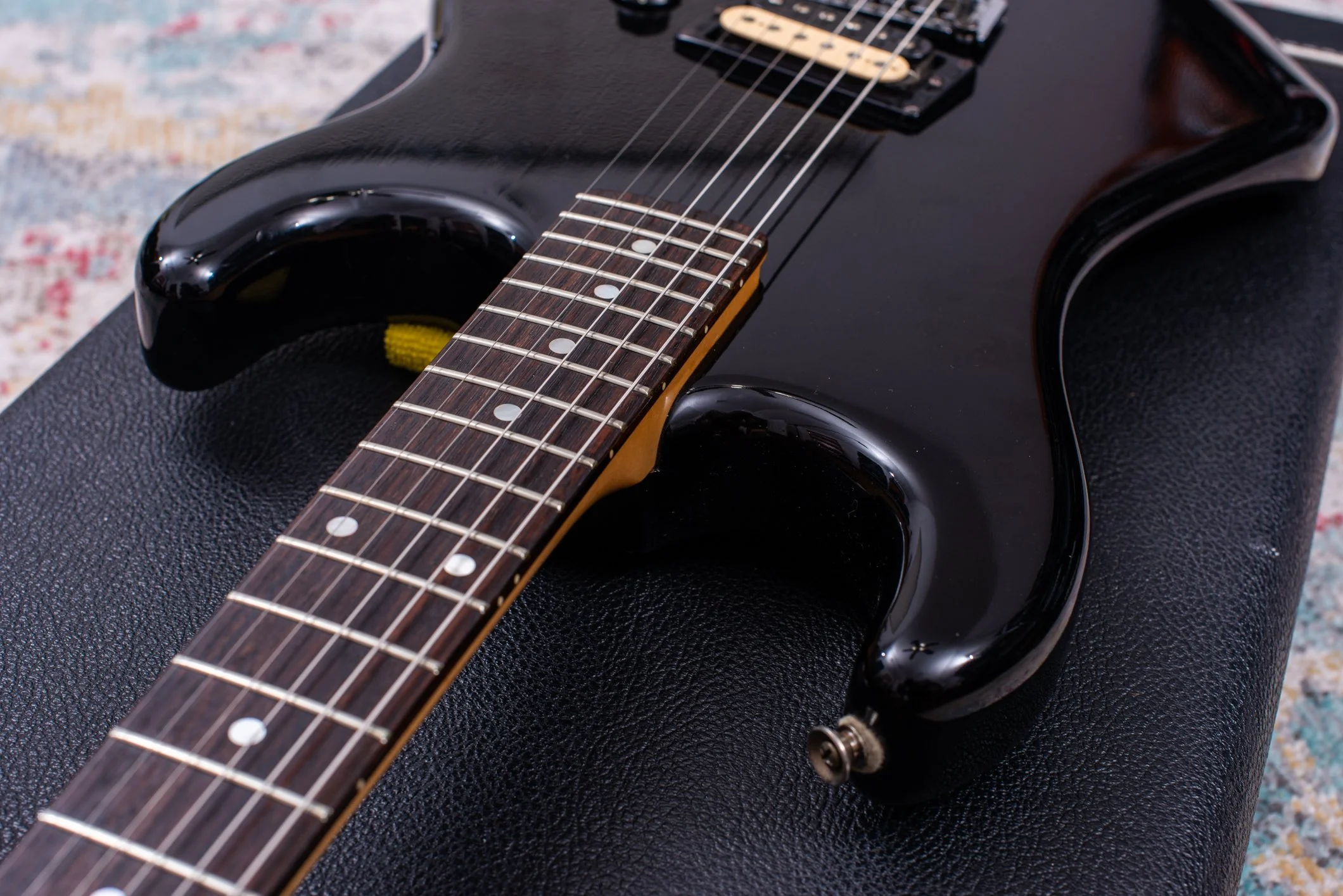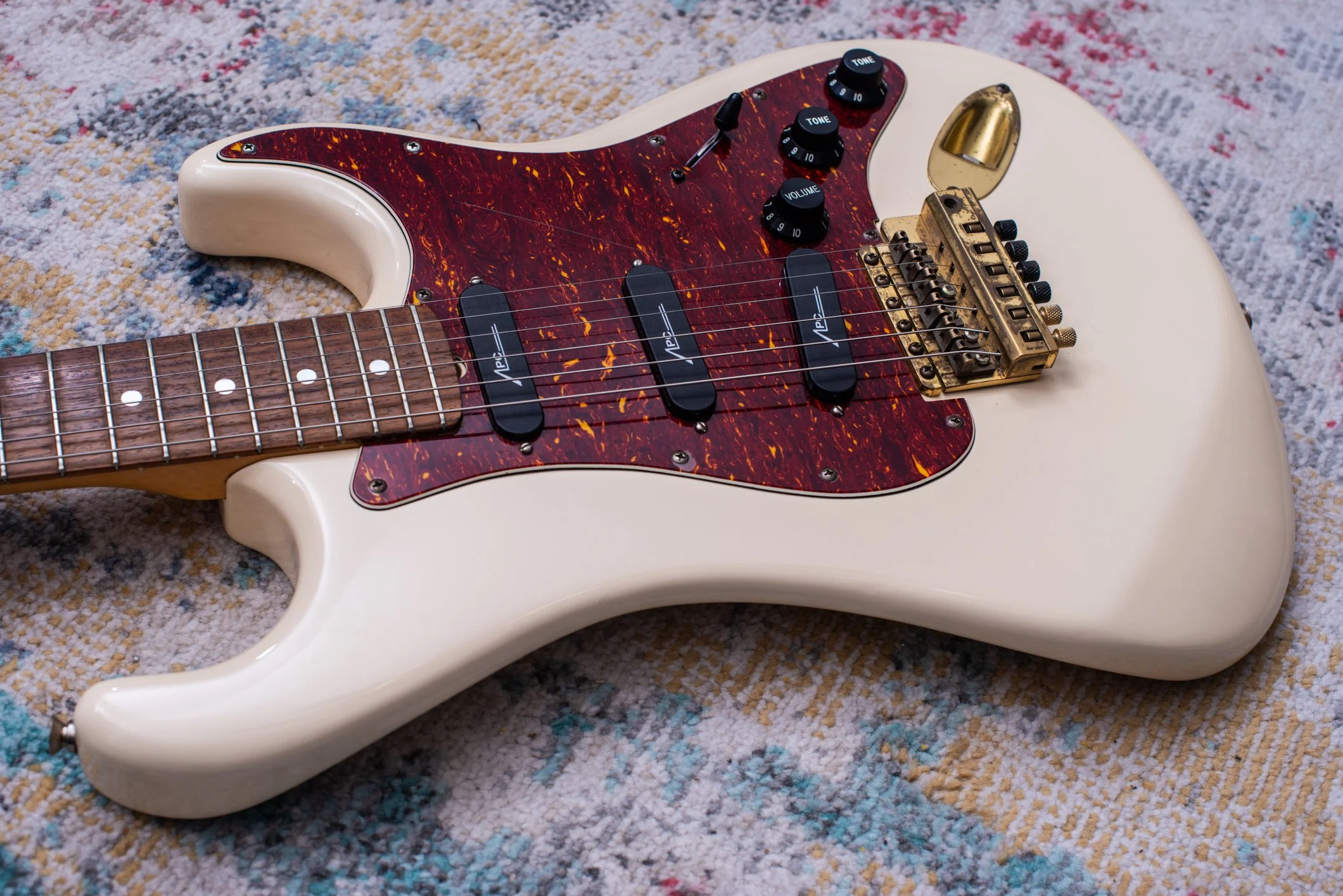I also hate people who spend a whole concert filming instead of enjoying themselves, but I forced myself to snag about a minute of “I’m In The Market To Please No One” for you all:
All in all, it was a pretty down to roots, plain old rock concert. Just what I wanted. And perhaps I’ll sound like a bit uncool here, but they were loud enough to have a great time but no piercing loud noises that made me want to put in my earplugs (which I take to every concert now after a few bad experiences).
Technical Stuff
This wouldn’t be Totally Rad Guitars if I didn’t talk about some of the technical stuff of course. The guitar player played a EVH 5150 Standard Series with a maple fretboard and hot pink finish, which of course is right up my alley in terms of guitar style. At other times he played a Gibson Flying V, and if I had to guess these are the same guitars shown in the various music videos. I’m not a bass player, but I’m pretty sure he was playing a Duff McKagan Deluxe Precision Bass with super cool block inlays and a black painted neck. Our front woman didn’t play guitar on every song, but she did on quite a few and used a Squier Sonic Esquire H in Lime Green finish, which I’m pretty certain I heard her say during the show that she had bought either that day or the day before.
In terms of amps… well, there was a Marshall 2525C but I’m almost positive that was the backup/house amp, but to be fair I didn’t get a great look at Coco’s pedalboard before they wrapped up so she may have been using that amp. The lead guitar player Dan played the entire show with his primary amp being a Universal Audio Lion floor pedal. I have to say, it sounded absolutely fantastic and I have no complaints about the tone at all, and that’s coming from a guy sitting in a room with 70 amps. Sure I’m a tube amp purist at times, but I bet being able to pack up two guitars and a handful of pedals to play a whole rock show must be awesome. Even if you brought a backup and power supply, it’d still be less stuff than even one amp head. It’s not the kind of music that needs a lot of pedals - I should’ve taken a picture of the board - but I’m pretty sure all I saw was a tuner and a delay, maybe there was a boost in there but I don’t think I saw more than 4 pedals on the whole board. I had the chance to talk to him after the show but I missed him, oops - this won’t be the last time I see this band though I’ll say that for sure.
I don’t know much about the other gear here, but I will say, that Coco used a wired mic the entire time which was pretty wild considering how active she was on stage. She even lifted the cord up over her shoulder and went down into the crowd for a little bit on one song and there were no equipment issues, trips, or malfunctions at least that I noticed. All in all I thought it was a really professional and great sounding show and considering the equipment that’s really impressive - maybe it sounds hypocritical of me to say but this is just more proof that you don’t need a bunch of fancy expensive equipment to write great songs, sound good, and entertain a crowd.
Final Thoughts
Look, even for bands I really like, I don’t buy merch, I don’t buy CD’s, I don’t even drink or if I do it’s a rare occasion. Despite my amp/guitar collection obsession, I’m painfully frugal. What I’m trying to say is, I bought a $60 sweatshirt and their CD at this show, that’s how good it was. Go see them next time they are near you, I paid a minuscule $25 for the ticket, and that has to be one of the best price to fun ratios I’ve ever had, at any concert.
At the time of writing, they are headed west and stopping at a few places along the way, but they’ll be back in Florida in May 2026 for the Rockville festival. I’m not a big festival guy but I’ll be watching closely to see if they play any bars around that date next year.
Check out their official website here: https://winonafighter.com/
